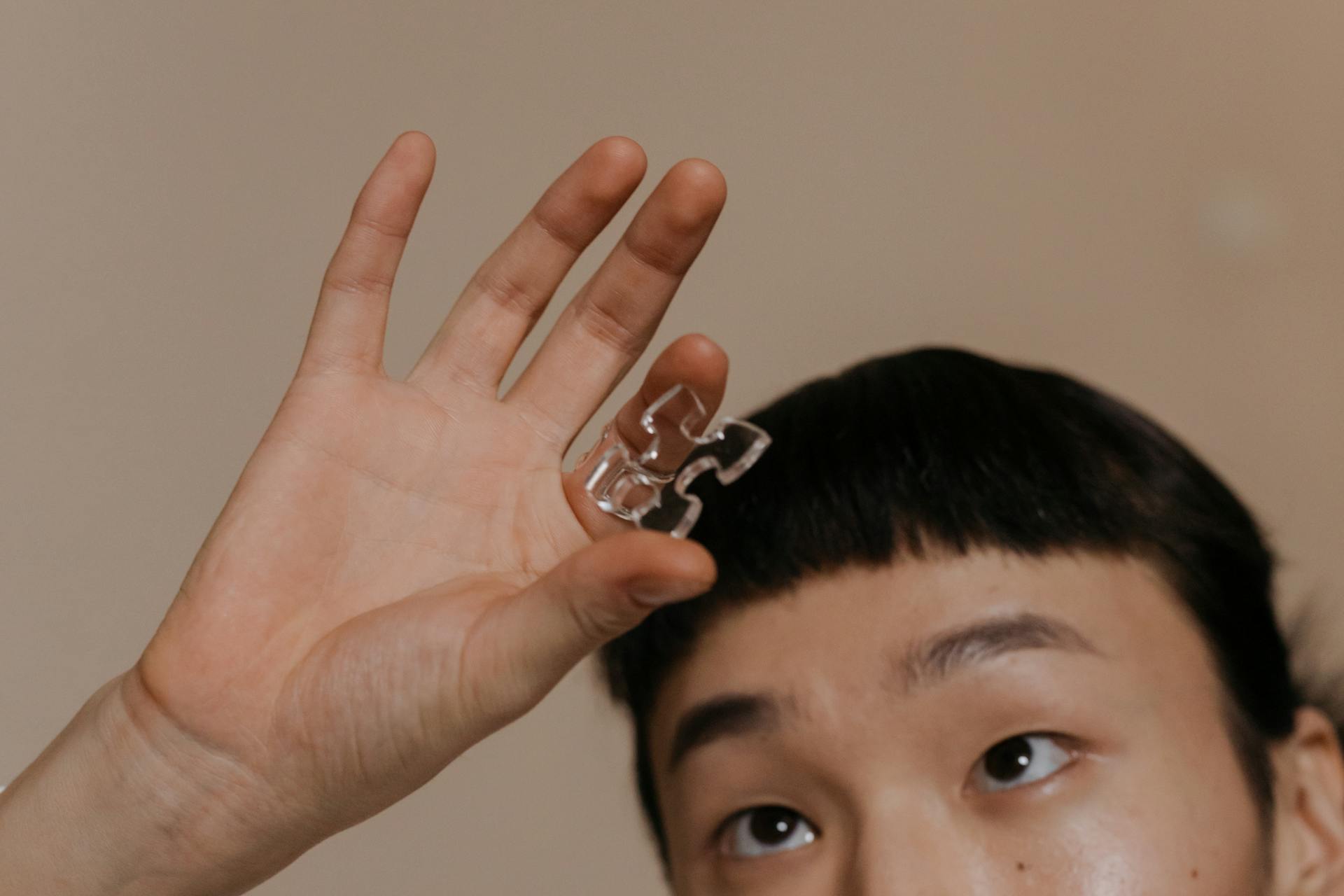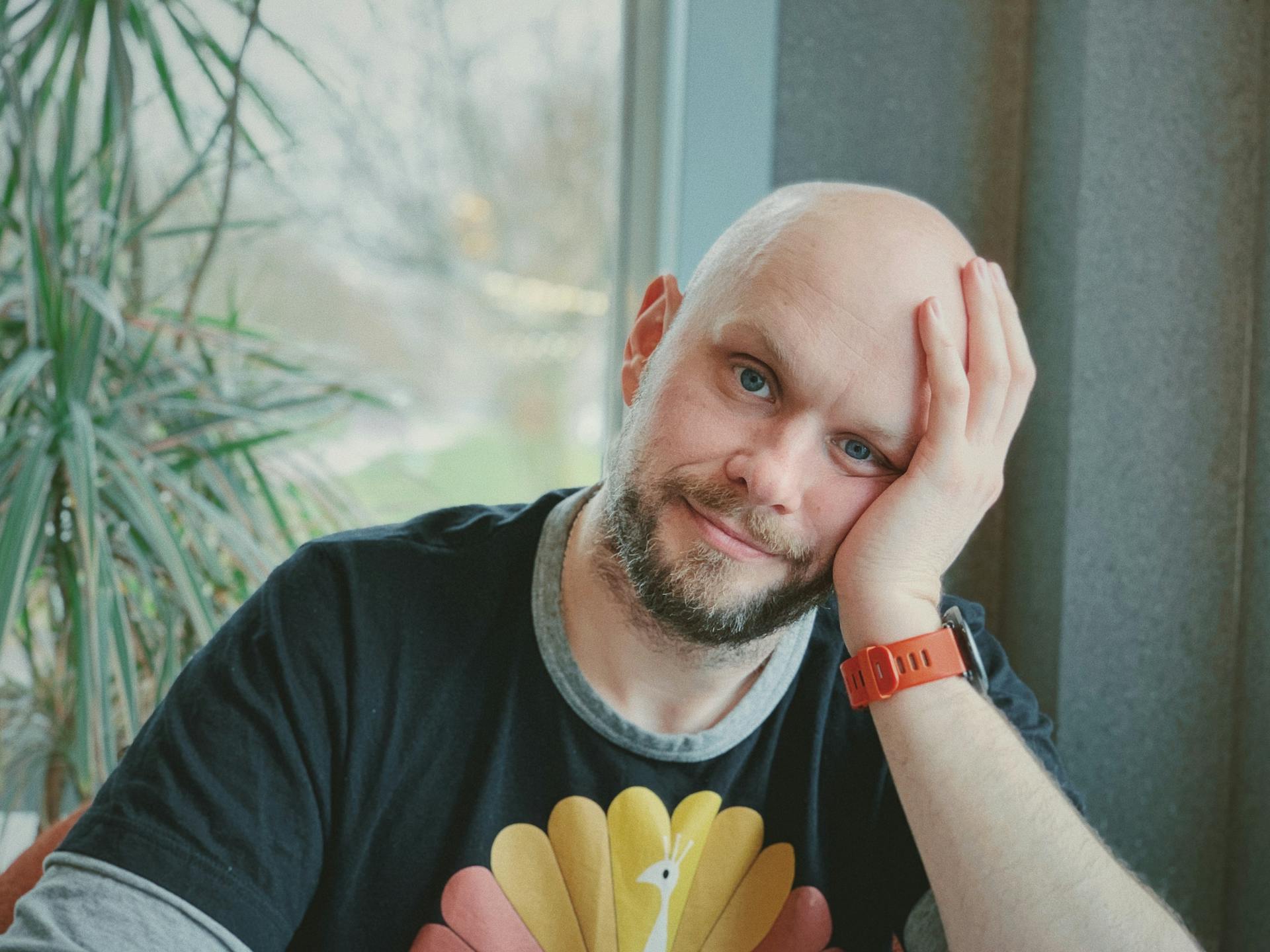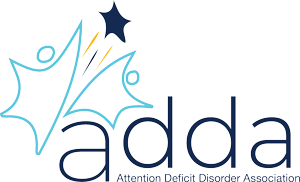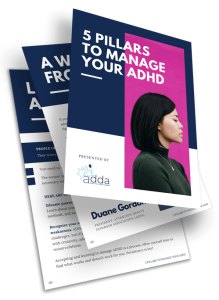
Creating Habits with ADHD: A Step-by-Step Guide
If you have ADHD, building habits can feel frustrating. You might start strong, then lose momentum. This happens not because you don’t care, but because your brain works differently.
Habits really matter. Why? Research shows they drive up to 45% of what we do each day.[1] That’s almost half your daily actions happening on autopilot. This is exactly why creating good habits is so powerful – they shape your life without requiring constant effort.
This guide will show you how to create good habits that align with your goals and actually work for your ADHD brain. It isn’t one-size-fits-all advice; it just provides clear steps to help you stay consistent and make real progress over time.
What Is a Habit?
A habit is a behavior that becomes automatic over time. Once it’s formed, you can do it with little or no conscious effort. Think brushing your teeth, checking your phone, or locking the door behind you.
Habits develop through repetition. When you repeat an action often enough in the same context, your brain starts to recognize the pattern and stores it for future use.
This frees up mental energy for other tasks. This can be especially helpful if you live with ADHD and experience decision fatigue or overwhelm.
Dopamine is a brain chemical that helps you feel good and motivated. It plays a big role in forming habits.[2] When you do something that feels good or rewards you, your brain releases dopamine. This good feeling makes you want to do that same action again later. Over time, this makes the behavior stick and become more automatic.
Habit vs. Routine
While habits and routines might seem similar, they work quite differently.
A habit is something you do automatically. You don’t have to think about it. It just happens — like brushing your teeth or checking your phone when you wake up. If you skip it, you might feel like something’s off.
A routine takes more effort. It’s a series of planned actions that need focus and intention. You might have to push yourself to follow through, especially if it feels boring or overwhelming.
Here’s how they compare:
- Habits: Brushing your teeth, washing your face, scrolling your phone
- Routines: Vacuuming on Sundays, going to the gym, meal prepping
Routines can turn into habits, but not always. The goal is to repeat a helpful routine often enough so that it becomes second nature.

How Habits Form in the Brain
Habits are formed through a pattern known as the habit loop, which can be broken down as follows:
Cue: The Trigger
A cue is what puts a habit into motion. It tells your brain to start a behavior.[3]
Cues can come from your environment, emotions, time of day, or location. For example, walking into a dark room might trigger the habit of turning on the light switch.
Motivation: The Craving or Intention
Another key part of the habit loop is the craving or intention behind the behavior.
A craving is a desire for a habit’s outcome, such as the energy boost from a cup of coffee.
Intention is a conscious decision to act in line with your goals. It drives you to plan and follow through.[3] For example, if you want to sleep better, you might set a device-free rule before bed.
Both cravings and intentions add motivation and purpose to your habits.
Response: The Action
The action is the behavior you perform in response to the cue. The easier it is to do, the more likely you are to follow through and make it a lasting habit.
That’s why it’s important to keep the action as friction-free and straightforward as possible. When something feels easy to repeat, you can stick with it consistently.
Reward: Reinforcement
The reward is the payoff that makes your brain want to repeat the action.[3] It’s like telling your brain, “Hey, that was good! Let’s do it again.” When you get a reward, the habit becomes more automatic over time and harder to break.
Rewards don’t need to be big or expensive. Sometimes, just feeling proud of yourself or accomplished can be enough to keep you going.

How to Start Creating Good Habits
Building better habits with ADHD requires strategies that work with your brain, not against it. The good news is that you can absolutely create lasting habits; it just takes the right approach.
Here are some strategies to keep in mind when creating new habits.
Choose a Specific, Small Habit
Trying to change everything at once rarely works, especially with ADHD. It’s too much for your brain to manage.
Start with one small habit. Be as specific as possible.
Instead of saying, “I’ll exercise more,” say, “I’ll go for a 20-minute walk on Mondays and Thursdays.”
If you’re unsure how to start habits that stick, the key is to keep them small, specific, and tied to strong cues.
Small habits are easier to start and less overwhelming to stick with. When you succeed, you build confidence. These wins add up and help you stay motivated.
Set a Clear Trigger
Each part of the habit-creation process is a lever you can pull, one of the most powerful being the cue. A cue is something that signals your brain to start a habit, and it can come from:
- A specific time of day
- An existing habit
- Your environment
Research shows that cues based on time or current routines can be equally effective.[4] In fact, combining them can be even more powerful.
For example, if you make coffee every morning, you could use that quiet moment to journal while you wait for the water to boil.
A strong cue ensures you don’t rely solely on memory or motivation to create a new habit.
Make it Easy
Redesign your environment by removing obstacles and making the habit easy to perform.
You can do this in several ways:
- Prepare what you need beforehand, like laying out your gym clothes the night before.
- Set alarms or reminders to go off when it’s time to do the habit.
- Place helpful items in visible spots, like keeping floss next to your toothbrush, so you’re reminded to floss your teeth every day.
- Use visual aids, like sticky notes or habit trackers, to remind you of your goal.
You can also use environmental modifications to break bad habits.

Reinforce with Rewards
Research shows that positive reinforcement is far more effective than punishment or self-blame.[5] That’s why leveraging positive rewards is important when creating new habits.
The challenge is that many good habits don’t offer immediate gratification. This can make them harder to stick with, especially for the ADHD brain, which responds to instant rewards more than delayed ones.[6]
Add a small, enjoyable treat right after completing the task to make your habits more rewarding. It could be a short break or your favorite snack.
The key is to reward yourself as soon as possible so your brain connects the effort with the payoff.
Track Your Progress
Many good habits don’t show results right away. That can make it hard to stay motivated, especially if you don’t see a payoff right away.
That’s why it helps to track your progress. A habit tracker gives you instant feedback and helps you stay consistent.
If you’ve ever wondered how many days to create a habit, the truth is: it varies. What matters more is showing up regularly and noticing small wins along the way.
You can track habits using an app, a notebook, or a simple checklist. Seeing your progress builds momentum and reminds you that your efforts are adding up, even when change feels slow.
Be Consistent, Not Perfect
Habits are hard to build. Some days, you’ll show up with excitement; other days, it might feel nearly impossible.
But what matters most is how you respond when you miss a day or two. Instead of falling into guilt or giving up, try this:
- Pause and reflect. What got in the way?
- Revisit your habit. Can you simplify it or adjust your cue and reward system?
- Start small again. There’s no need to jump right to where you left off. You can ease back in with a simpler version of the habit.
- Celebrate the reset. Getting back on track is a win in itself.
Being kind and patient with yourself is one of the most powerful tools for staying motivated and creating lasting habits.

Common Pitfalls When Creating Habits
You don’t have to learn everything the hard way. By understanding common mistakes people make when building habits, you can avoid them early on and make greater progress in less time.
Starting Too Big
Big goals can feel exciting initially, but it becomes easy to lose motivation when the progress feels slow or unnoticeable.
Try to start small. Exercise for 10 minutes, prep meals for one day a week, or write a simple three-item to-do list each morning.
As these small actions become consistent, you can celebrate each milestone and gradually scale up.
Lack of Clarity or Triggers
Vague goals don’t lead to lasting habits because they lack direction. Without a specific plan or trigger, it’s hard to build consistency.
To successfully create habits, tie them to clear cues and specific actions.
Instead of saying, “I want to get healthier,” try something like, “I’ll commit to going for a long walk on Monday and Wednesday,” or “I’ll go to bed 10 minutes earlier each night.”
The more specific your habit, the easier it is to follow through.
Ignoring Rewards
Even the best habit plans will lose momentum without positive reinforcement. When a habit feels like a chore with no payoff, it’s harder to stick with it.
Write down a few small rewards that truly motivate you, such as a relaxing bath or some guilt-free time watching your favorite show. Then, pair the reward with the habit.
These rewards help train your brain to associate the habit with something enjoyable, making it more likely to last.
Giving Up After a Slip
All-or-nothing thinking is one of the biggest habit-killers. If you miss a day, it’s tempting to feel like you’ve failed, but that’s not true.
What matters more than perfection is how you recover. Focus on getting back on track the next day, even if you have to restart small. Ultimately, progress comes from consistency, not perfection.
Creating Good Habits That Last
Like money growing through compound interest, habits build up through small, consistent actions. The steps you take might seem tiny now, but they transform your life over time. Remember, creating habits isn’t about perfection; it’s about progress.
With the right tools and strategies, habit-building is absolutely possible for adults with ADHD. ADDA+ offers access to the resources, tips, and advice you need to change your lifestyle through habit-building. You’ll also be part of a community of people with similar goals, so you won’t have to journey alone.
References
[1] McCloskey, K., & Johnson, B. T. (2021). You are what you repeatedly do: Links between personality and habit. Personality and Individual Differences, 181, 111000. https://doi.org/10.1016/j.paid.2021.111000
[2] Buabang, E. K., Donegan, K. R., Parnian Rafei, & Gillan, C. M. (2024). Leveraging cognitive neuroscience for making and breaking real-world habits. Trends in Cognitive Sciences, 29(1), 41–59. https://doi.org/10.1016/j.tics.2024.10.006
[3] Zhu, Y., Long, Y., Wei, L., Zhang, Y., Ma, Z., Lee, K. P., Zhang, L., & Wang, S. J. (2024). Developing cue-behavior association for habit formation: A qualitative study to explore the role of avatar in hypertension. Digital health, 10, 20552076241265217. https://doi.org/10.1177/20552076241265217
[4] Keller, J., Kwasnicka, D., Klaiber, P., Sichert, L., Lally, P., & Fleig, L. (2021). Habit formation following routine-based versus time-based cue planning: A randomized controlled trial. British journal of health psychology, 26(3), 807–824. https://doi.org/10.1111/bjhp.12504
[5] Fremling, L., Phillips, L. A., Bottoms, L., Desai, T., & Newby, K. (2025). Comparing positive versus negative intrinsic rewards for predicting physical activity habit strength and frequency during a period of high stress. Applied psychology. Health and well-being, 17(1), e12650. https://doi.org/10.1111/aphw.12650
[6] Furukawa, E., Bado, P., da Costa, R. Q. M., Melo, B., Erthal, P., de Oliveira, I. P., Wickens, J. R., Moll, J., Tripp, G., & Mattos, P. (2022). Reward modality modulates striatal responses to reward anticipation in ADHD: Effects of affiliative and food stimuli. Psychiatry Research: Neuroimaging, 327, 111561. https://doi.org/10.1016/j.pscychresns.2022.111561





